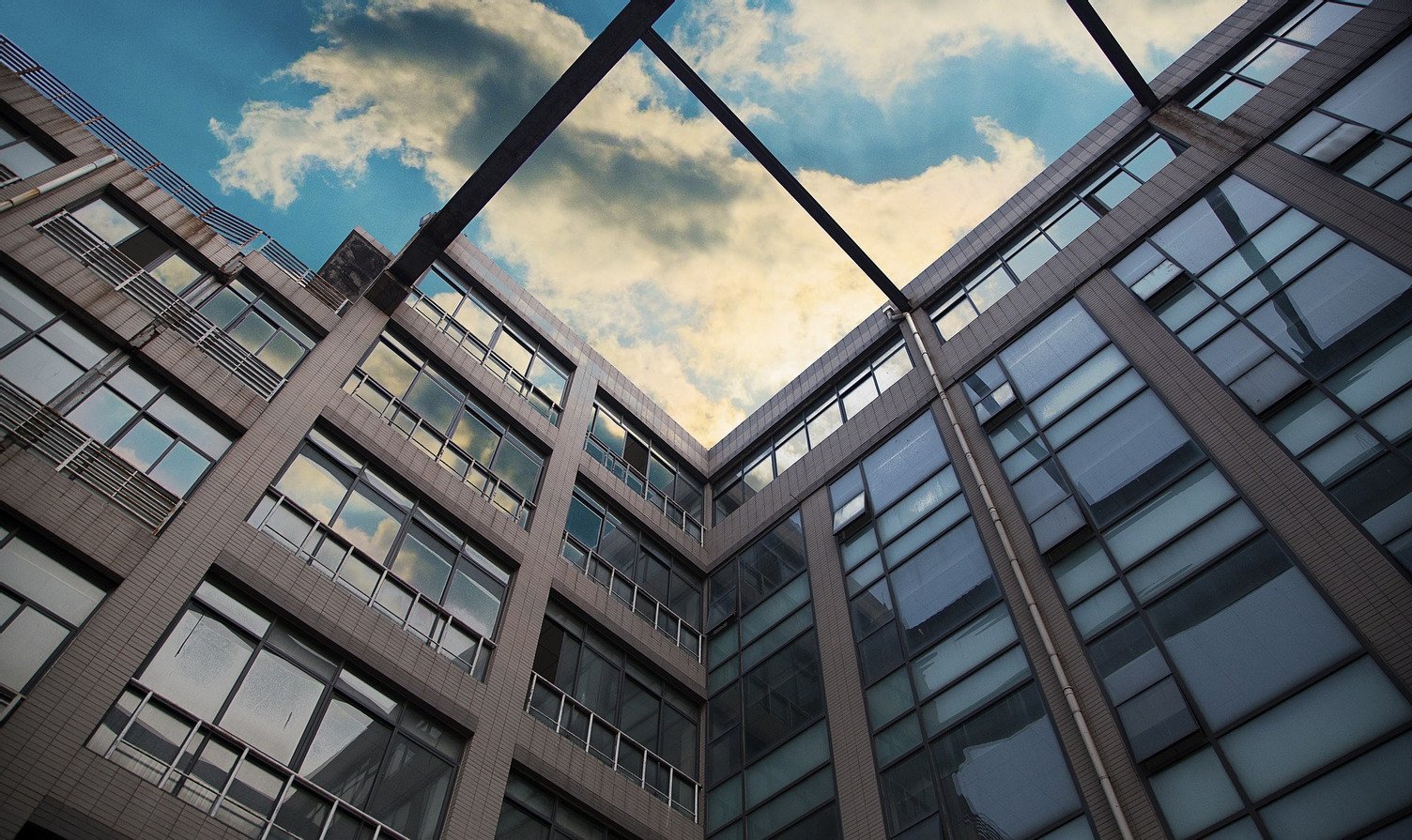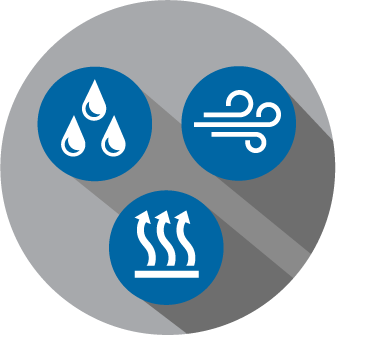How Buildings Work: Building Science Facts to Know about Air and Moisture

Building Envelope and Control layers
A building envelope is the physical separator between the conditioned and unconditioned environment of a building including the resistance to air, water, heat, noise, and light. To consider how to keep your building safe and protected, it’s important to consider each different control layer of the building’s wall system. These control layers protect against three primary risks: heat, air and moisture. These control layers are prioritized in order of which risk factor can inflict the greatest damage at the fastest rate.
Science Behind Building Design
Building design may not take place in a lab or involve Erlenmeyer flasks. But there is a significant amount of science that factors into how modern buildings are designed so they can stand up to the elements.
Building science generally refers to the design of the building’s envelope, taking into consideration the building’s location, uses and what types of weather conditions it will endure. “Given all those different scenarios and factors, you determine the best prescribed formula for how this building should be constructed,” says John Chamberlin, senior product manager for the DensElement® Barrier System.
Relying on building science has become a more common practice, and as a result buildings are lasting longer and becoming more sustainable, energy efficient, resilient to weather conditions and comfortable for occupants. “We’re in the heyday of good building performance. But we still have several existing buildings that didn’t have this practice before and need retrofits,” Chamberlin says.
Water barrier
Water in its liquid form is public enemy number one when it comes to the building envelope. Good water control relies on the principle of 3Ds:
- Deflect: Keep water from getting inside in the first place.
- Drain: Create opportunities for the water to drain away from the building.
- Dry: If any water does get in, make sure there are opportunities for it to dry out so it doesn’t get absorbed deeper into the building.
The deflection layer would be the wall’s cladding. Then, as a safety net, there needs to be a drainage plane behind the cladding that can direct water away from the wall assembly. In some cases, a water-resistive barrier, such as DensElement® Barrier System, can act as this drainage plane because it stops liquid water. In all cases, the location of the drainage plane and appropriate drainage details need to be determined during the building’s designed phase. Because the DensElement® Barrier System is highly permeable, it enables moisture vapor to pass through the wall, allowing the wall assembly to dry out.
Air barrier
This is a building envelope’s second priority. Air affects energy efficiency. If there is an air leak, unwanted cool or warm air can enter the building. Air can also carry in pollutants, odors, gases and allergens from the outside. But most importantly, air can also carry water. That means an air leak can lead to moisture inside the wall cavity. Even if a building has a good water-resistive barrier but has an air leak, water vapor can be carried into the building and degrade the materials from the inside. “It may look like a water leak, but it’s actually air,” Chamberlin explains.
Although water vapor can permeate through some building materials in humid climates, Chamberlin argues that that generally happens at such a slow rate that it rarely becomes an issue assuming the good drying strategy has been included in the design. “Air leakage is a much bigger concern because it can transport water at a much higher rate,” he says.
Vapor barrier
With water vapor, a key concern is the dew point – the temperature at which water changes from a liquid to a gas. If the air inside the wall assembly reaches the dew point, then water vapor can become a liquid and cause damages.
The defense against water vapor is to create an opportunity for the wall assembly to dry. If liquid water in a wall cavity warms up and becomes vapor, it should have an opportunity to move out of the wall system, into the drainage cavity and then away from the building.

Insulation layer
Insulation provides energy efficiency and interior comfort for the building’s occupants. Continuous insulation on the building’s exterior is similar to wrapping a blanket around your body. A blanket keeps a person warm by acting as a protective layer that keeps out cold air. Combining continuous insulation with a tight air barrier, such as the DensElement® Barrier System, creates a high level of energy efficiency and good control over interior comfort.
Bringing it all together
An important aspect of building science is that all of these control layers need to be continuous for the wall assembly to achieve its best performance. With both new construction and renovations, the DensElement® Barrier System acts as a continuous air barrier and water-resistive barrier that can be used with a variety of cladding types and offers superior energy efficiency when paired with continuous insulation. If you haven’t already, give The Pencil Test a try and see for yourself.
This article is intended solely as general information. Ultimately, the design and detailing of any project, assembly or system is the responsibility of a professional, and all projects must comply with applicable building codes and standards. For information concerning the limited warranty for the DensElement® Barrier System, visit www.denselement.com. GP Gypsum disclaims any responsibility or liability for the architecture, design, engineering or workmanship of any project, assembly or system.